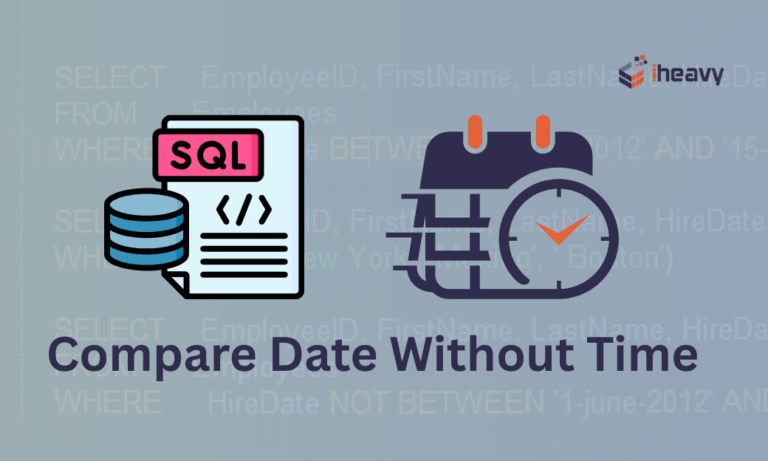What is a Relational Database and Why is it Important? | Explained
Relational databases are like super-organized filing systems that lots of businesses use to keep things running smoothly. If a CRM is taken as an instance, it is about the customers, what they buy, and how they interact. It helps businesses make smart choices and build good relationships with their customers.
And when it comes to online shops, like your favorite websites, these databases are the behind-the-scenes heroes. When you order something online, or a store gets a new shipment, relational databases are the unsung heroes making sure it all happens smoothly: hence reflects it importance.
Now let’s analyze the importances this “backstage crew” that makes sure the show goes on without a hitch!
A Dive into Relational Databases
Imagine a vast library, housing countless books filled with information. To effectively locate and utilize this wealth of knowledge, you’d need a well-organized system that allows you to navigate the library’s contents.
Similarly, relational databases provide a structured and efficient way to store, manage, and retrieve large volumes of data.

The Building Blocks of Relational Databases
At the heart of a relational database lie tables, which represent collections of related data. Each table consists of rows and columns, forming a grid-like structure.
Each row represents a unique record, encapsulating specific information about an entity, such as a customer, product, or order. Columns, on the other hand, represent distinct attributes or properties of the entity.
For instance, a customer table might have columns for customer ID, name, address, and email.

The Power of Relationships
The true strength of relational databases lies in their ability to establish relationships between tables. These relationships, often represented by foreign keys, allow data to be connected across multiple tables, forming a complex network of information.
For example, an order table might have a foreign key referencing the customer ID column in the customer table, indicating which customer placed the order.
The Language of Relational Databases: SQL
To interact with and manipulate data stored in a relational database, we use a standardized language called Structured Query Language (SQL). SQL provides a comprehensive set of commands for defining tables, inserting, updating, and deleting data, as well as retrieving specific information through queries.
Unraveling the Mysteries of Data Integrity
Data integrity is paramount in any database, ensuring that the information stored is accurate, consistent, and reliable. Relational databases employ various mechanisms to safeguard data integrity, such as primary keys, which uniquely identify each record, and data constraints, which restrict the values that can be stored in a column.
Importance of Relational Databases
Relational databases are cornerstones of data management, playing a pivotal role in organizations across diverse industries. Their ability to organize, store, and retrieve large amounts of data efficiently and reliably makes them indispensable for a wide range of applications.
Efficient Data Organization and Storage
Relational databases excel at structuring and organizing data into a structured format, ensuring that information is neatly arranged and easily accessible. This structured approach promotes data integrity, consistency, and reliability.
Streamlined Data Retrieval and Queries
With their relational structure, relational databases facilitate the retrieval of specific information through complex queries. Utilizing standardized SQL commands, users can navigate through the database, extracting data based on specific criteria or relationships.
Maintaining Data Integrity
Data integrity is paramount in any database, ensuring that the information stored is accurate, consistent, and reliable. Relational databases employ various mechanisms to safeguard data integrity, including:
- Primary Keys: Unique identifiers for each record, preventing data duplication and ensuring data consistency.
- Data Constraints: Rules that restrict the values that can be stored in a column, preventing invalid or erroneous data entry.
- Transactional Support: Mechanisms to group multiple operations into a single, atomic unit, ensuring data consistency in case of failures.
Enhancing Data Analysis and Decision-Making
Relational databases provide a solid foundation for data analysis and decision-making. Their structured format facilitates data aggregation, summarization, and visualization, enabling users to extract meaningful insights from the data.
Supporting Scalability and Growth
As organizations grow and data volumes expand, relational databases can seamlessly scale to accommodate the increasing data load. Their ability to distribute data across multiple servers ensures performance and availability.
Widespread Use and Adoption
Relational databases have gained widespread adoption across various industries, including:
- Customer Relationship Management (CRM): Storing customer information, sales records, and interaction history.
- E-commerce Platforms: Managing product catalogs, inventory levels, customer orders, and payment transactions.
- Financial Management Systems: Storing customer accounts, transactions, and financial data.
- Supply Chain Management Systems: Tracking product movement, inventory levels, and supplier information.
The versatility of relational databases ensures their continued relevance in the ever-evolving data landscape. Their ability to manage, analyze, and extract insights from large volumes of data makes them indispensable tools for organizations seeking to harness the power of data for informed decision-making and competitive advantage.
FAQs – Frequently Asked Questions and Answers
- What is the difference between a relational database and a NoSQL database?
Answer: Relational databases adhere to a structured schema, while NoSQL databases offer more flexibility in data storage and organization.
- What are the key characteristics of a relational database?
Answer: Data is organized in tables, tables are connected through relationships, and data manipulation is done using SQL.
- What are some popular relational database management systems (RDBMS)?
Answer: MySQL, PostgreSQL, Oracle Database, and Microsoft SQL Server are widely used RDBMS.
To Conclude
Relational databases have stood the test of time, remaining a cornerstone of data management due to their ability to organize, store, and retrieve data efficiently and reliably. Relational databases, with their structured approach and standardized language, will continue to play a pivotal role in managing and analyzing the ever-expanding world of data.
By mastering the art of relational databases, you can unlock the power of data, enabling informed decision-making and driving innovation.






